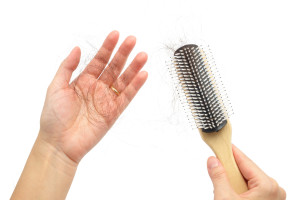 Change can be difficult at any age, especially for children who cannot fully grasp the impact of something new—no matter the scale. For a young child, spoiled by mom and dad’s undivided love and affection, what could be more uncertain than being told you’re about to have a sibling—a sibling who will require you to share your mommy and daddy and your toys? Don’t fear this conversation with your son or daughter. Instead, approach it as an opportunity to share your excitement for your expanded family with one of the most precious individuals in your life. There are ways to make the news that your child is going to be a big brother or sister one that results in acceptance of the uncertain, and even enthusiasm and excitement.
Change can be difficult at any age, especially for children who cannot fully grasp the impact of something new—no matter the scale. For a young child, spoiled by mom and dad’s undivided love and affection, what could be more uncertain than being told you’re about to have a sibling—a sibling who will require you to share your mommy and daddy and your toys? Don’t fear this conversation with your son or daughter. Instead, approach it as an opportunity to share your excitement for your expanded family with one of the most precious individuals in your life. There are ways to make the news that your child is going to be a big brother or sister one that results in acceptance of the uncertain, and even enthusiasm and excitement.
Since your child’s comprehension, fears, and experiences will be different depending on his or her age, we have broken out our advice by age band.
Ages 1 – 2
Children of this age will not entirely understand what it means to be getting a sibling. What will be most important is for you is to talk about the new baby with excitement, and for your child to hear and feel that positivity from you. Eventually, he or she will associate happiness with their new sibling when the baby arrives. To help with your child’s comprehension, read storybooks together that focus on the arrival of a new baby, and explain that something similar is about to happen to your family.
Ages 2 – 4
At this age, your child’s primary concern will likely be a fear of having to share mom and dad’s time and affection with a new baby. Talk to your child and reassure him or her that you will always be there for love and support, even when the baby arrives. He or she will also need to understand, however, that you will need to spend dedicated time caring for the new baby. Involve your child in the planning process, so that he or she feels that preparing for the new baby is something your family is doing together. Also, be sure to explain that there will be a day or two when you are in the hospital with your new baby. Reassure your child that the separation will only be temporary and that you will be home soon so that you can all meet and greet the new baby as a family.
Ages 5 and Up
Slightly older children will be best able to understand what it means to be getting a sibling, but that doesn’t mean they will be happy about sharing your attention. Keep your child as involved in the planning and preparation process as possible so that he or she continues to feel your affection and attention. If possible, allow your child to see you and the baby at the hospital, and when you return home, give them small, safe responsibilities that will help him or her to develop a sense of pride in being an older sibling.
While preparing your child for a new baby, make sure you take a holistic approach to preparing your family. Make time for self-care, for the needs of your child, your husband, and of course, your newest addition. When everyone feels cared for and supported, they will be able to approach the latest change in your collective lives as a cohesive team, and that will make everyone happy.
More
Gas – we all have it, and newborns are no exception.
 Due to access air swallowed when feeding, crying, and sucking on a pacifier, babies tend to be gassier than toddlers and older children. Because babies can’t limit the intake of air, they may pass gas more often. While passing gas is normal, it can lead to uncomfortable pain. Babies can’t communicate to let you know when they are feeling discomfort, so always be on the lookout for gas pain or other discomfort. Oftentimes, small adjustments with feeding can alleviate issues with gas.
Due to access air swallowed when feeding, crying, and sucking on a pacifier, babies tend to be gassier than toddlers and older children. Because babies can’t limit the intake of air, they may pass gas more often. While passing gas is normal, it can lead to uncomfortable pain. Babies can’t communicate to let you know when they are feeling discomfort, so always be on the lookout for gas pain or other discomfort. Oftentimes, small adjustments with feeding can alleviate issues with gas.
The following list provides at-home strategies to ease gas pain in your baby.
- Find the best feeding position. The majority of gas pain occurs because your baby ingests too much air. In order to limit the amount of air your baby intakes, focus on the position of your baby’s head when feeding. Work to keep the head raised above the stomach. Elevating the head allows the milk to fall to the bottom of the stomach, letting the air rise to the top, which makes it easier for your baby to burp access air bubbles.
- Be aware of bubbles in bottles. If you are warming a breast milk bottle and shake it up, you will create air bubbles in the milk. Formula requires shaking, so air bubbles build up in those bottles as well. Simple allow the bottle to settle for a few minutes before feeding as this should eliminate most of the bubbles and decrease air ingestion.
- Select the proper nipple. When bottle feeding, always use a low-flow nipple to reduce the amount of air ingested while feeding. Additionally, be sure the entire nipple fills with milk or formula before administering the bottle to your baby, as air caught in the nipple may accidentally be fed to your baby.
- Take occasional burping breaks. Longer breaks are suggested if your baby doesn’t burp that time around. To ensure your baby burbs in each cycle, take breaks and lay him/her on their back for a few moments and then try burping again.
- Massage your baby’s tummy. In addition to limiting air intake, massaging can provide relief. Tummy time and gentle stomach massage can help the gas pass.
- If breastfeeding, examine your diet. It is true that some foods that mom’s ingest might cause more gas for baby. What foods do you eat that may cause gas? Dairy products and caffeine may irritate your baby’s stomach. Do you notice more gas after you’ve had onions, broccoli or garlic? Additionally, as your baby moves on to juices and solid foods, some babies have trouble digesting the sugar alcohols found in some fruits.
When should you seek professional help?
If your baby is particularly fussy and at-home tactics for feeding aren’t enough, it may be time to consult your doctor. Additionally, if your baby has a fever or vomiting or bowl movement issues, following up with your child’s pediatrician is best.
More
 Movies and television shows often depict the moment a woman goes into labor as being defined by a single, decisive event. “My water just broke!” screams the actress as she grabs her overnight bag and rushes for the door. In real life, knowing you are in labor is not always that evident. Several signs and symptoms may indicate your new baby is on the way—but there are also several false signs of labor that many women misinterpret. Familiarize yourself with the following real and false signs of labor so that you can feel confident you will know when the special moment has finally arrived.
Movies and television shows often depict the moment a woman goes into labor as being defined by a single, decisive event. “My water just broke!” screams the actress as she grabs her overnight bag and rushes for the door. In real life, knowing you are in labor is not always that evident. Several signs and symptoms may indicate your new baby is on the way—but there are also several false signs of labor that many women misinterpret. Familiarize yourself with the following real and false signs of labor so that you can feel confident you will know when the special moment has finally arrived.
Signs of Labor
- The Baby Drops. When this movement occurs, you will have a feeling as though the baby has moved to a lower position within your pelvis (making it easier for you to breathe, but also putting more pressure on your bladder) as the baby moves into a head-down position to prepare for birth. Understand, however, that this movement may occur anywhere from a few weeks, to a few hours before you officially go into labor.
- Lower Back Pain and Cramping. When contractions begin, you may feel increasing pressure in your pelvis and rectal areas, as well as a dull ache in your lower back.
- Strong, Regular Contractions. One of the most common questions for first-time moms is how to identify a real contraction. When your baby is preparing for birth, you will feel regular, rhythmic, and intense muscle contractions that become less than five minutes apart for more than an hour or two. You may sense the contractions first in your back, and then in your belly. Real labor contractions feel as though your abdomen suddenly becomes hard, and then relaxes.
- Bloody Vaginal Discharge. Known as “bloody show,” you may notice an increase in pink, brown, or bloody vaginal discharge as labor begins, or even a few days prior. This labor symptom occurs when the mucous plug that blocks your cervix loosens, and your cervix begins to dilate in preparation for labor.
- Nausea or Diarrhea. Some women report vomiting at the start of labor or experiencing diarrhea.
- Your Water Breaks. While not always as dramatic as it appears in the movies, you may experience the sensation of your water breaking. When this occurs, the protective sac of amniotic fluid that surrounds your baby ruptures. While some women feel a quick rush of liquid, others report they only notice a slow trickle. Your water may break days before real labor begins, during labor, or may need to be broken by your OBGYN, so don’t plan to use this as your final indicator that it’s time to call your doctor.
Signs of False Labor
To ease your nerves about what to expect when you are (imminently) expecting, familiarize yourself with the following common signs of false labor.
- Braxton Hicks (“False Labor”) Contractions, occur at irregular time intervals, do not get closer together, are felt in the lower abdomen, and are weak as compared to true labor contractions. Real labor contractions initially last more than 30 seconds and progress to up to 60 seconds.
- Abdominal cramping that goes away if you change positions, move around or lay down.
- A generalized feeling of abdominal tightening or cramping in the lower abdomen and groin that does not radiate into your entire abdomen and lower back.
- Lack of bloody show.
- Leaking urine—not amniotic fluid.
When to Call Your OBGYN
If you think you may be in labor—especially if you are a first-time Mom, call your OBGYN. Even if you are expecting baby two or three, your labor symptoms may vary. Your OBGYN can help you interpret your symptoms and decide if it is time to prepare for your baby’s arrival officially.
More
 With a new baby at home, worrying about losing baby weight should not be a concern at the top of your list. However, you may be wondering when you might feel (and look) like yourself again.
With a new baby at home, worrying about losing baby weight should not be a concern at the top of your list. However, you may be wondering when you might feel (and look) like yourself again.
According to the American Pregnancy Association, on average, a woman should gain 25 to 35 pounds during pregnancy. When considering your time frame for losing the baby weight, keep in mind that it took you nine months to grow an entire human being! In general, losing the baby weight could take anywhere from 10 weeks to a year, depending upon your pre-pregnancy weight. And women who were overweight before pregnancy may encounter a longer time frame to returning to their pre-pregnancy weight.
Set Realistic Goals
Weight loss should be slow and steady. Women that lose 1-2 pounds per week typically are more successful at keeping the weight off. Considering most moms lose 7 to 8 pounds after the baby is delivered, plan a realistic goal to lose the rest. For example, if you decide to shed 20 pounds, set up a 10-week plan to lose 2 pounds per week.
While it’s crucial to lose baby weight, ideally within 6 to 12 months to prevent further issues with obesity, new moms must mindful of what their body can handle. Returning to pre-pregnancy vigorous workouts too soon could be harmful to your body. Instead, opt for a gradual increase of exercise activity, giving your body the proper time to heal.
To reach your goal weight, consider the following tactics:
- Exercise: Instead of heading back the gym or fitness classes right away, start with brisk stroller walks. In addition to the benefits of fresh air and sunlight, brisk walks will get your blood pumping. Aim for at least 150 minutes per week (about 20-25 minutes per day). When possible, add in short yoga or stretching videos/apps to help your muscles adapt to the new routine. Try to include 10 to 15 minutes of stretching per day, switching up targeted muscle groups throughout the week.
- Eat healthy foods: Rather than crash dieting, which can increase stress, consider eating more whole foods (eggs, veggies, fruits, meat, whole grains, etc.). While new babies will leave you with little time to cook and prepare healthy meals, it’s imperative to pass on ready-made and processed foods. As opposed to snacking on convenience foods, set aside time to meal prep while the baby is sleeping or with a loved one. Cut up fruits, roast meat/veggies, and pre-cook eggs for fast snacks on the go. Stocking your fridge and pantry with healthy meals with make the choice easier.
- Hydrate: Drink plenty of water to prevent dehydration, keep your metabolism moving, and help your stomach to feel full. A good rule of thumb is to aim for 64 ounces (8 glasses of 8 ounces each) of water per day.
- Sleep: Yes, sleep. While a full nights rest may seem difficult during the first few months, follow the old rule to sleep when the baby sleeps. Try to reach a combination of naps and night sleep to achieve seven hours. Once your baby is sleeping through the night, it will be much easier to achieve a good night’s rest.
Overall, enjoy your newborn and move around when you can. Your body and baby will thank you!
More
 After giving birth, your body will experience some changes, including soreness and pain. While most changes are minor inconveniences, a few things could leave you questioning your body’s health. It’s important to remember: each person is different and not all bodies will experience the same issues. Monitor your own body and address unusual changes. Drinking plenty of water, eating fruits, veggies and whole grains, and getting enough sleep can help combat many issues. Remember to take care of your own body by giving yourself time to recover and heal.
After giving birth, your body will experience some changes, including soreness and pain. While most changes are minor inconveniences, a few things could leave you questioning your body’s health. It’s important to remember: each person is different and not all bodies will experience the same issues. Monitor your own body and address unusual changes. Drinking plenty of water, eating fruits, veggies and whole grains, and getting enough sleep can help combat many issues. Remember to take care of your own body by giving yourself time to recover and heal.
The following list explains some of the most common postpartum body changes:
- Perineum Soreness: Expect to encounter some soreness in the area between your vagina and rectum. This area can stretch or even tear during pregnancy, causing irritation. To manage perineum soreness: apply a cold pack to the area, sit on a pillow, soak in a bath or, if the pain is more severe, ask your doctor for medicine to ease the pain.
- Vaginal Discharge: After giving birth, you may experience an increase of vaginal discharge or fluid from your vagina. Typically a mix of blood and tissue from the uterus, vaginal discharge is usually heavier and brighter red immediately following pregnancy. However, over the course of a few weeks, it typically will become lighter in color and flow. To manage discharge, use panty liners or sanitary pads, while experiencing symptoms. Avoid tampons.
- Breast Soreness: Your body will prepare for breastfeeding and you will likely experience breast engorgement (large, heavy breasts that are tender to the touch). In addition to breast engorgement, many new moms will also experience sore and cracked nipples. To manage breast engorgement, breastfeed the baby as much as possible. To manage nipple soreness, ask your physician for recommendations on creams and at-home treatment.
- Afterbirth Pain: As your uterus returns to its regular size, you may experience pain known as uterus contractions. Pain typically only lasts a few days after you give birth. To manage soreness, ask your doctor for an over-the-counter pain relief recommendation.
- Bladder Incontinence: Due to the pressure on your pelvic muscles during pregnancy, your bladder may be temporarily weakened. Incontinence symptoms may include feeling pain or a burning sensation when urinating, feeling of a full bladder but not being able to urinate, or feeling a frequent/sudden urge to urinate. To manage incontinence, use sanitary pads, drink lots of water, and practice Kegels.
- Excessive Sweat: Many new moms will sweat more after giving birth, especially at night. It’s caused by hormones working to get rid of access fluids used to support the pregnancy. Postpartum sweating typically subsides in a couple weeks, possibly even in a few days. To mange sweating, wear loose/light pajamas, cover your sheets with a towel, and sleep in a cool room. Additionally, drinking plenty of water will help prevent your body from becoming dehydrated.
- Hair Loss: During pregnancy, your hair may be fuller and thicker, but after giving birth, many new moms will see thinner hair or hair loss. Typically lasting three to four months, hair loss should subside eventually. To manage hair loss, eat plenty of fruits and vegetables and stay hydrated.
- Hemorrhoids: During and after pregnancy, many woman will experience painful swollen veins around the anus. To manage hemorrhoids, drink plenty of water and soak in warm baths to relieve symptoms.
If any of the above symptoms seem extreme, call your doctor. He or she can discuss what is normal or what may need more attention.
More
 They say that the breast is best, but that doesn’t mean it’s the easiest way to feed your newborn. First time moms are often not prepared for, or aware of, many of the common issues that can be experienced when both you and your baby are learning to work together for the first time. To help ease any breastfeeding nerves and prepare you to overcome any challenges, familiarize yourself with these common scenarios and troubleshooting best practices.
They say that the breast is best, but that doesn’t mean it’s the easiest way to feed your newborn. First time moms are often not prepared for, or aware of, many of the common issues that can be experienced when both you and your baby are learning to work together for the first time. To help ease any breastfeeding nerves and prepare you to overcome any challenges, familiarize yourself with these common scenarios and troubleshooting best practices.
Leaking Breasts
This issue can be as embarrassing as it is frustrating, but it’s not necessarily a bad thing. Leaking helps prevent engorgement (large, heavy, painful breasts—more on that later). Leaking can be unpredictable but often goes away on its own once you are breastfeeding regularly. To mitigate leaking breasts at inopportune times, when you start to sense oncoming milk letdown, apply firm pressure to your breasts by crossing your arms across your chest as if to hug yourself. Also, consider wearing clothes that easily camouflage any uncontrollable wetness.
Engorgement
Frequently occurring in the first several days after a baby is born, in exacerbated cases, engorgement may cause feelings of hard, swollen, throbbing, lumpy, breasts that may even cause you to run a fever. Engorgement may occur if you are not able to nurse your baby frequently enough or empty your breasts sufficiently during each feeding. Complicating matters further, engorgement may make it difficult for your baby to latch onto the breast. To minimize your chances of engorgement, nurse within two hours of your baby being born, and then nurse regularly after that (between eight and 12 times a day after the first 24 hours).
Baby Won’t Latch
Sensing your baby will not or cannot latch to your breast can be particularly stressful but try not to let your anxiety inhibit your ability to work through the process together. There are a variety of reasons why baby can’t latch at first that range from a difficult birth to the shape of your nipples (naturally flat nipples make it difficult for baby to grasp). Depending on the cause, you may have to adjust your troubleshooting technique. In general, however, keep your baby skin-to-skin as much as possible to get him comfortable being close to your chest. Coax baby to feed by expressing a drop of milk on your nipple and encouraging him or her to lick and nuzzle. Also, focus on the best positioning for you both. Support baby by leaning back and allowing his entire body to be supported against you. You can also cradle your baby in a football hold if that is more comfortable.
Baby Isn’t Eating Enough
New moms often fear their baby isn’t getting enough milk. Know that the vast majority of women produce enough milk to satiate their babies and keep them healthy. To determine if your baby is getting enough, make sure he or she is swallowing and is satisfied when complete. When baby first latches, he will suck rapidly to stimulate milk flow, and then move into a deep, slow, pulling rhythm. Look and feel for the sensation of his jaw moving as he swallows. When your breastfeeding session is complete, your baby should seem peaceful and content. A baby that is lethargic or cries for more food may not have gotten enough milk.
If you experience any of these conditions or issues while breastfeeding, speak to your OBGYN or your baby’s pediatrician. Breastfeeding should offer a necessary emotional bonding opportunity for you and your baby and should not be a cause of stress or discomfort.
More
 The big day is coming up. You got this, right? Many first-time moms’ excitement and wonder is often accompanied with feelings of fear, anxiety, and unease abut the unknowns of childbirth. Discussing your feelings and birthing plan with your OBGYN is helpful. Another way to help you prepare for the birth of your baby is to attend a childbirth education class. First time moms and their partners often find these classes informative and even entertaining.
The big day is coming up. You got this, right? Many first-time moms’ excitement and wonder is often accompanied with feelings of fear, anxiety, and unease abut the unknowns of childbirth. Discussing your feelings and birthing plan with your OBGYN is helpful. Another way to help you prepare for the birth of your baby is to attend a childbirth education class. First time moms and their partners often find these classes informative and even entertaining.
5 Benefits of Attending a Childbirth Education Class
- A class can help ease your fears and anxiety. The instructor(s) in a childbirth class will go over exactly what you can expect from your water breaking, to the hospital check in, to labor and delivery and bringing home baby. In addition, classes allow you to discuss your fears about labor and birth with the instructor and other moms and support persons with the same concerns.
- A class will help your partner feel included. Your support person is so important in the childbirth process, even if he or she doesn’t know it yet. After all, you’re going to be a little busy and may not be thinking clearly on that day. Attending a child birth class together is a wonderful way to bond and share the excitement about the birth of your new baby. During the class, your support person learns his or her vital role in helping you feel comfortable, being your healthcare advocate and making sure everything goes smoothly.
- A class instructor will discuss in detail, various pain relief options. Many women head into labor without a plan about pain. In childbirth class, you’ll learn about all your options which will help you make a more well-informed decision on or before your delivery day. Some classes also teach moms breathing and relaxation techniques to use during labor.
- You will get to take a tour of the hospital and facilities. Where will you sleep? Will your baby share your room or go to the nursery? If you have a C-section, where will that take place? During your class, you’ll have the opportunity to tour the labor and delivery wing of the hospital and see doctors and other staff in action. Again, this removes an extensive list of unknowns.
- Your bathing, sleeping and breastfeeding questions will be addressed. Birthing classes often cover what to do after baby is born including safe sleeping methods, breastfeeding FAQs and how to care for baby in the first few weeks.
When should you sign up?
Generally, the best time to begin your childbirth class is between 28-32 weeks of pregnancy. You should sign up ahead of time for class in order to reserve a spot that works for your schedule. Check with your OBGYN to find classes available in your area. You may also want to check the website of the hospital you will be delivering at for a schedule.
More
 In today’s busy world, doctor visits can be left on the horizon or on your “to-do” list for too long. The Center for Disease Control and Prevention reports that only 65% of women visit their OB-GYN for preventative care. While it’s especially easy to put off visits to the OBGYN (especially when you feel healthy), here are the top reasons to make your next appointment today!
In today’s busy world, doctor visits can be left on the horizon or on your “to-do” list for too long. The Center for Disease Control and Prevention reports that only 65% of women visit their OB-GYN for preventative care. While it’s especially easy to put off visits to the OBGYN (especially when you feel healthy), here are the top reasons to make your next appointment today!
- You can’t remember the last time you had a pap smear. The days of annual pap exams are in the past, as new research recommends woman receive a pap test every five years. The exam tests for cervical cancer and can be combined with a test for HPV. Due to the extension of time between advised pap exams, be sure to schedule your visits on time.
- You are thinking about getting pregnant. Before you start trying, it’s best to find and establish care with an OBGYN. The first priority will be to begin taking pre-natal vitamins. Folic acid, calcium, iodine and iron are all important vitamins to begin taking. Preconception counseling may also include discussion of family history and lifestyle to set up success for a healthy conception and pregnancy.
- You just found out that you are pregnant. Prenatal care is imperative for a healthy baby and mommy. At your first exam, your OBGYN will typically conduct a pelvic exam and measure your blood pressure, breathing rate, and heart rate. He/she will also review what to expect in the coming months and set you up with your next appointments and ultrasounds.
- You haven’t had a clinical breast exam in a while. In addition to your recommended monthly self-exam, it’s also good to receive professional breast exams once per year. Professionals can detect abnormalities you may have missed at home. The earlier you detect breast cancer, the better.
- You have an irregular period, or you experience painful periods. If you suspect your period is abnormal, there is help available. Issues may include abnormal flow levels, length of period, consistency of period, and level of pain/discomfort. It’s best to speak with your OBGYN.
- Your vaccinations are not up to date. The HPV vaccination may be the most common vaccine to discuss with your OBGYN; however, you can also ask about flu and other shots at your women’s health visit.
- You have questions about sex. Women of any age may have questions about sexual concerns, including pain with sex, birth control, and sexual-transmitted infections (STI). Always speak to your doctor if you experience unusual symptoms or face anxieties.
- You haven’t been feeling yourself. While the OBGYN doesn’t seem like the most likely place to discuss mental health, changes in women’s bodies (postpartum, menopause, puberty, etc.) can affect mental health. Start by asking your OBGYN for information on how to best cope with changes to your body.
We are accepting new patients!
If you are in the WNY area and are looking for an OBGYN group, consider Chouchani, Sayegh and Robinson MD. Please call our office for an appointment.
More
 As a parent, HPV can be a scary concept. No one wants to discuss cancer with their pre-teens, but research shows that children should receive the HPV vaccination as early as 11 years old. HPV refers to the sexually transmitted infection (STI) called human papillomavirus (HPV). As the most common STI, more than 100 variations of HPV exist. Some people with HPV never experience symptoms and the virus may go away on its own within a couple years. However, HPV can also lead to genital warts and cancer, with the Center for Disease Control and Prevention (CDC) reporting more than 32,000 cases of HPV-related cancers each year.
As a parent, HPV can be a scary concept. No one wants to discuss cancer with their pre-teens, but research shows that children should receive the HPV vaccination as early as 11 years old. HPV refers to the sexually transmitted infection (STI) called human papillomavirus (HPV). As the most common STI, more than 100 variations of HPV exist. Some people with HPV never experience symptoms and the virus may go away on its own within a couple years. However, HPV can also lead to genital warts and cancer, with the Center for Disease Control and Prevention (CDC) reporting more than 32,000 cases of HPV-related cancers each year.
So, you may be wondering, how is HPV contracted? As an STI, the HPV virus is contracted through skin-to-skin contact, even if intercourse does not take place. Genital contact to the mouth, anus, and vagina can result in contraction of HPV.
According to the CDC, “HPV is a very common virus; nearly 80 million people—about one in four—are currently infected in the United States.” Upward of 14 million people, including teens, will contract the virus each year. HPV affects both men and woman and can cause the following cancers: cervix, vagina, vulva, penis, anus and throat. In addition to the 32,000-plus cases of cervical cancer, the CDC reports, “Every year in the United States, nearly 500,000 women are diagnosed with low grade cervical pre-cancers, and more than 200,000 women are diagnosed with high grade cervical lesions.”
Thanks to advances in medicine, a vaccination can help stop HPV by protecting against cancers caused by the HPV infection. The CDC recommends that all children, male and female, be vaccinated at age 11 or 12. In adolescents, two doses are needed six months apart. Teens over 14 years will need three doses over six months. All woman under 26 and all men under 21 should receive updates to the vaccination as they grow older. Additionally, the LGBTQ community should also receive the vaccination.
In addition to the vaccination, what else can be done to protect children? Talk with your teens, even if you don’t suspect they are engaging in sexual relationships. While these conversations can be tough at the time, remember that your child’s long-term health is paramount. It’s better to have the conversation early, rather than waiting until they are sexually active. Additionally, speak to your teens about proper condom use and monogamous relationships. Lastly, encourage sexually active adults, aged 21 to 65, to receive regular cervical cancer screenings from their doctor.
Sources:
https://www.cdc.gov/hpv/parents/vaccine.html
https://www.plannedparenthood.org/learn/stds-hiv-safer-sex/hpv
More
 As your daughter moves from child to adolescent, to young woman, she will experience a variety of firsts—and so will you. A critical rite of passage in her transition to adulthood, and in her pursuit of optimal health, is her first visit to an obstetrician-gynecologist (OB-GYN) for a routine exam—but when is the right time to take that step?
As your daughter moves from child to adolescent, to young woman, she will experience a variety of firsts—and so will you. A critical rite of passage in her transition to adulthood, and in her pursuit of optimal health, is her first visit to an obstetrician-gynecologist (OB-GYN) for a routine exam—but when is the right time to take that step?
Why Young Women Need Routine Gynecology Exams
Gynecology exams are not only critical for women who are pregnant or looking to become pregnant, or for women who are presenting symptoms of concern. The American College of Obstetrics and Gynecology (ACOG) recommends that all women should obtain an annual screening, and that includes young women. Even if your daughter is not complaining of any health issues, such as painful or irregular periods, she should still receive proactive, regular examinations.
Regular gynecology exams for young women provide:
- A safe space to ask questions and receive information about such topics as sex and body changes from a trusted source.
- Preventive education and dialogue regarding the risks of sexually transmitted diseases and unplanned pregnancy.
- Necessary diagnoses and treatments for women who present with symptoms.
When Should a Young Woman Have Her First Visit with an OB-GYN?
The ACOG recommends that young women should have their first visit with an OB-GYN between the ages of 13 and 15. Ideally, you will want to schedule your daughter’s first appointment after her first menstrual period. At this point in her life, your daughter should be well aware of her changing body and may have questions she’d like to ask you or a doctor.
What Will the First Visit Entail?
Both mothers and daughters should know what to expect from the first visit. Typically, a young woman’s first appointment with an OB-GYN will include a general physical exam and an external genital exam. An internal examination (or pelvic exam) of the reproductive organs will typically not take place until age 21 for women without any health issues. If your daughter who is under the age of 21 is experiencing such health concerns as abnormal bleeding or painful periods, your OB-GYN may recommend a pelvic exam sooner. Also, OB-GYNs typically recommend a Pap smear every three to five years, but not until age 21.
The Supportive Role You Will Play in Your Daughter’s First Exam
Even if she understands what to expect, a young woman’s first gynecological exam may cause her to feel nervous or uncomfortable, which is why it is critical that she has the support every step of the way. Talk to your daughter before the exam. Make sure she understands what to expect and answer any questions she may have. Foster open dialogue and make sure she knows that even if she fears her questions may be silly, that you are willing to answer anything with honesty and respect.
Your daughter may or may not want you to be in the room with her when she has her first exam, but make sure she understands that either way, you are there to support her before, during, and after her first and all future visits with her OB-GYN.
Chuochani, Sayegh and Robinson MD is accepting new patients. Please give us a call today if you’d like to schedule an appointment.
More
 Change can be difficult at any age, especially for children who cannot fully grasp the impact of something new—no matter the scale. For a young child, spoiled by mom and dad’s undivided love and affection, what could be more uncertain than being told you’re about to have a sibling—a sibling who will require you to share your mommy and daddy and your toys? Don’t fear this conversation with your son or daughter. Instead, approach it as an opportunity to share your excitement for your expanded family with one of the most precious individuals in your life. There are ways to make the news that your child is going to be a big brother or sister one that results in acceptance of the uncertain, and even enthusiasm and excitement.
Change can be difficult at any age, especially for children who cannot fully grasp the impact of something new—no matter the scale. For a young child, spoiled by mom and dad’s undivided love and affection, what could be more uncertain than being told you’re about to have a sibling—a sibling who will require you to share your mommy and daddy and your toys? Don’t fear this conversation with your son or daughter. Instead, approach it as an opportunity to share your excitement for your expanded family with one of the most precious individuals in your life. There are ways to make the news that your child is going to be a big brother or sister one that results in acceptance of the uncertain, and even enthusiasm and excitement.
 Due to access air swallowed when feeding, crying, and sucking on a pacifier, babies tend to be gassier than toddlers and older children. Because babies can’t limit the intake of air, they may pass gas more often. While passing gas is normal, it can lead to uncomfortable pain. Babies can’t communicate to let you know when they are feeling discomfort, so always be on the lookout for gas pain or other discomfort. Oftentimes, small adjustments with feeding can alleviate issues with gas.
Due to access air swallowed when feeding, crying, and sucking on a pacifier, babies tend to be gassier than toddlers and older children. Because babies can’t limit the intake of air, they may pass gas more often. While passing gas is normal, it can lead to uncomfortable pain. Babies can’t communicate to let you know when they are feeling discomfort, so always be on the lookout for gas pain or other discomfort. Oftentimes, small adjustments with feeding can alleviate issues with gas. Movies and television shows often depict the moment a woman goes into labor as being defined by a single, decisive event. “My water just broke!” screams the actress as she grabs her overnight bag and rushes for the door. In real life, knowing you are in labor is not always that evident. Several signs and symptoms may indicate your new baby is on the way—but there are also several false signs of labor that many women misinterpret. Familiarize yourself with the following real and false signs of labor so that you can feel confident you will know when the special moment has finally arrived.
Movies and television shows often depict the moment a woman goes into labor as being defined by a single, decisive event. “My water just broke!” screams the actress as she grabs her overnight bag and rushes for the door. In real life, knowing you are in labor is not always that evident. Several signs and symptoms may indicate your new baby is on the way—but there are also several false signs of labor that many women misinterpret. Familiarize yourself with the following real and false signs of labor so that you can feel confident you will know when the special moment has finally arrived. With
With  After giving birth, your body will experience some changes, including soreness and pain. While most changes are minor inconveniences, a few things could leave you questioning your body’s health. It’s important to remember: each person is different and not all bodies will experience the same issues. Monitor your own body and address unusual changes. Drinking plenty of water, eating fruits, veggies and whole grains, and getting enough sleep can help combat many issues. Remember to take care of your own body by giving yourself time to recover and heal.
After giving birth, your body will experience some changes, including soreness and pain. While most changes are minor inconveniences, a few things could leave you questioning your body’s health. It’s important to remember: each person is different and not all bodies will experience the same issues. Monitor your own body and address unusual changes. Drinking plenty of water, eating fruits, veggies and whole grains, and getting enough sleep can help combat many issues. Remember to take care of your own body by giving yourself time to recover and heal. They say that the breast is best, but that doesn’t mean it’s the easiest way to feed your newborn. First time moms are often not prepared for, or aware of, many of the common issues that can be experienced when both you and your baby are learning to work together for the first time. To help ease any
They say that the breast is best, but that doesn’t mean it’s the easiest way to feed your newborn. First time moms are often not prepared for, or aware of, many of the common issues that can be experienced when both you and your baby are learning to work together for the first time. To help ease any  The big day is coming up. You got this, right? Many first-time moms’ excitement and wonder is often accompanied with feelings of fear, anxiety, and unease abut the unknowns of childbirth. Discussing your feelings and birthing plan with your OBGYN is helpful. Another way to help you prepare for the birth of your baby is to attend a childbirth education class. First time moms and their partners often find these classes informative and even entertaining.
The big day is coming up. You got this, right? Many first-time moms’ excitement and wonder is often accompanied with feelings of fear, anxiety, and unease abut the unknowns of childbirth. Discussing your feelings and birthing plan with your OBGYN is helpful. Another way to help you prepare for the birth of your baby is to attend a childbirth education class. First time moms and their partners often find these classes informative and even entertaining. In today’s busy world, doctor visits can be left on the horizon or on your “to-do” list for too long. The Center for Disease Control and Prevention reports that only 65% of women visit their OB-GYN for preventative care. While it’s especially easy to put off visits to the OBGYN (especially when you feel healthy), here are the top reasons to make your next appointment today!
In today’s busy world, doctor visits can be left on the horizon or on your “to-do” list for too long. The Center for Disease Control and Prevention reports that only 65% of women visit their OB-GYN for preventative care. While it’s especially easy to put off visits to the OBGYN (especially when you feel healthy), here are the top reasons to make your next appointment today! As a parent, HPV can be a scary concept. No one wants to discuss cancer with their pre-teens, but research shows that children should receive the
As a parent, HPV can be a scary concept. No one wants to discuss cancer with their pre-teens, but research shows that children should receive the  As your daughter moves from child to adolescent, to young woman, she will experience a variety of firsts—and so will you. A critical rite of passage in her transition to adulthood, and in her pursuit of optimal health, is her first visit to an obstetrician-gynecologist (OB-GYN) for a routine exam—but when is the right time to take that step?
As your daughter moves from child to adolescent, to young woman, she will experience a variety of firsts—and so will you. A critical rite of passage in her transition to adulthood, and in her pursuit of optimal health, is her first visit to an obstetrician-gynecologist (OB-GYN) for a routine exam—but when is the right time to take that step?